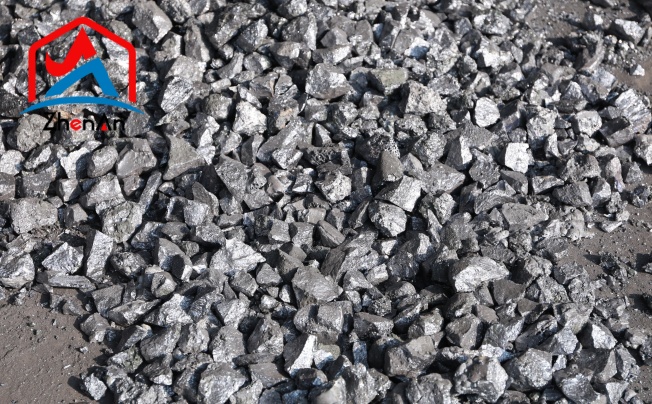Silicon, a versatile and abundant element, plays a crucial role in powering the modern world. Its unique properties have made it indispensable in various industries, ranging from electronics to solar energy and construction.
Exploring the Versatility of Silicon
Silicon, a chemical element with atomic number 14 and symbol Si, holds a significant position in the periodic table due to its unique properties and widespread applications. Known for its abundance in the Earth's crust, silicon exhibits remarkable versatility in various industries, making it an indispensable component of modern technology and innovation.
With a crystalline structure that allows it to conduct electricity while also serving as an insulator, silicon has become a cornerstone of the technological revolution. In the realm of electronics, silicon plays a pivotal role as the primary material used in semiconductor devices such as transistors, integrated circuits, and diodes.
Pricing Models for Silicon
When it comes to purchasing silicon, companies have the option of buying through spot market pricing or entering into long-term contracts. Spot market pricing refers to buying silicon at the current market price without a pre-arranged contract, allowing for more flexibility in terms of quantity and timing. On the other hand, contract pricing involves negotiating a fixed price over a specified period, providing stability but potentially limiting opportunities to benefit from price fluctuations. The choice between spot and contract pricing depends on factors such as market volatility, supply chain needs, and risk management strategies.
Price Fluctuations Based on Market Trends and Economic Conditions
Silicon prices are highly influenced by market trends and economic conditions. Factors such as changes in demand from key industries like electronics and solar energy, shifts in global production capacities, geopolitical tensions affecting supply chains, and macroeconomic indicators like exchange rates all play a role in determining silicon prices.
Price fluctuations can be sudden and significant, impacting not only the cost of raw silicon but also downstream products that rely on silicon as a critical component. Staying informed about market trends and economic conditions is crucial for businesses to make informed decisions regarding their silicon procurement strategies.
Silicon Pricing in Different Industries
The Impact of Silicon Prices on Consumer Electronics
Silicon is a crucial component in the manufacturing of consumer electronics, playing a pivotal role in the production of semiconductors and integrated circuits. As such, any fluctuations in silicon prices directly impact the cost of producing electronic devices such as smartphones, laptops, and tablets.
The Role of Silicon Costs in Determining Solar Panel Prices
In the solar energy sector, silicon is a primary material used in the manufacturing of photovoltaic cells that convert sunlight into electricity. The cost of silicon accounts for a substantial portion of the total production cost of solar panels. Therefore, any fluctuations in silicon prices directly impact the affordability and feasibility of solar energy projects.
When silicon prices are high, it can drive up the overall cost of solar panels, making renewable energy less competitive compared to traditional fossil fuel sources. Conversely, when silicon prices are low, it can incentivize investment in solar power generation.
Use of Silicon in Building Materials and Its Cost Implications
Silicon also finds extensive use in the construction industry for various applications such as sealants, adhesives, and coatings due to its durability and weather resistance properties. The cost implications of using silicon-based building materials depend on market conditions and pricing trends for raw silicon.
Builders and contractors factor in these costs when estimating project budgets and pricing their services. Fluctuations in silicon prices can impact construction costs for both residential and commercial projects, potentially influencing decisions on material selection and project timelines.
Future Outlook for Silicon Costs
Emerging Technologies Shaping Silicon Demand
The future of silicon costs is closely intertwined with the rapid evolution of technology. Emerging sectors such as artificial intelligence, the Internet of Things (IoT), and electric vehicles are driving a surge in demand for silicon-based products. Silicon's role in semiconductors, which are the building blocks of these technologies, is fundamental. As these industries continue to expand and innovate, the demand for high-quality silicon is expected to skyrocket. This increased demand could lead to a rise in silicon prices globally.
Moreover, the development of 5G technology is another significant factor influencing silicon costs. The rollout of 5G networks requires advanced infrastructure and devices that heavily rely on silicon components. The transition to 5G promises faster data speeds, lower latency, and enhanced connectivity, all of which necessitate sophisticated silicon solutions. This surge in demand from the telecommunications sector is projected to have a substantial impact on silicon pricing trends shortly.
Furthermore, as quantum computing moves closer to becoming a reality, there is growing anticipation for its potential impact on silicon costs. Quantum computers harness the power of quantum bits or qubits, which require ultra-pure silicon materials for their operation. The unique properties of silicon make it an ideal candidate for supporting quantum computing advancements. Therefore, as research and development in this field progress, there could be a surge in demand for specialized high-grade silicon materials, leading to an escalation in production costs.
Sustainability Initiatives Reshaping Production Methods
In recent years, sustainability has emerged as a critical driver influencing production methods and costs across industries—including the manufacturing of silicon-based products. Sustainability initiatives aim to reduce environmental impact while ensuring efficient resource utilization throughout the supply chain. In response to growing environmental concerns and regulatory pressures, many companies are adopting eco-friendly practices that prioritize energy efficiency and waste reduction.
One key aspect impacting silicon production methods is the shift towards renewable energy sources such as solar power. Silicon plays a crucial role in solar panels used for harnessing solar energy. By incorporating sustainable energy practices into manufacturing processes—such as utilizing solar power for operations—companies can not only reduce their carbon footprint but also potentially decrease production costs associated with traditional energy sources.
Moreover, advancements in recycling technologies offer promising opportunities for improving sustainability within the silicon industry.
Recycling presents a viable solution for reducing waste and conserving resources by repurposing end-of-life products or by-products generated during manufacturing processes back into usable materials like reclaimed silicon wafers or ingots. Implementing circular economy principles through efficient recycling programs can help mitigate raw material scarcity concerns and contribute towards lowering overall production costs while promoting environmental stewardship.






